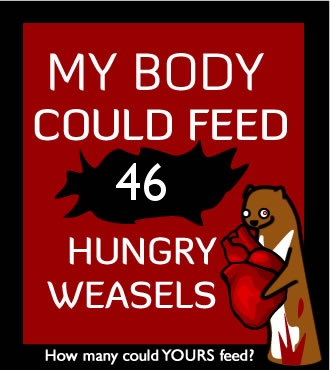Recently, two high-schoolers from Trinity High School in New York undertook a most amazing science project. With the help of Rockefeller University and the American Museum Of Natural History, they collected objects around them to determine their DNA identities. They compared the DNA sequences from their objects to a DNA library known in the scientific community as GenBank.
Their first finding was, unfortunately, not unusual among such studies. They found that 17% of the food products that they tested were actually misrepresented by the names on their labels (see press release). Such food products included a brand of sheep's milk cheese that was actually made from cow's milk, venison dog treats made of beef; gourmet sturgeon caviar that was actually Mississippi paddlefish, a delicacy called “dried shark” which was freshwater Nile perch, dried smelt that was instead Japanese anchovy, and “Caribbean Red snapper” that turned out to be Malabar blood snapper from Southeast Asia.
Their study is the latest of many papers that have cast doubt on the foods we eat, particularly some of the more extravagant ones. Last year, two other students from Trinity High School tested the sushi in local restaurants and found that other fish species were often substituted from some of the higher end ones. Of course, despite being rather underhanded, this may work out in the fishes’ favor, as the cheaper fish tend to be more abundant (which is why they are cheaper), and are perhaps less threatened by fishing pressure. But, this is not universally so. Fish that cannot be traded legally often get processed and sold under pseudonyms. A full 25% of fish tested in that study proved to be entirely other fish. Of these, at least one was a species that is farmed and on the Monterey Bay Aquarium’s ‘safe’ list (but it is not nearly worth the price of the species it was masquerading as), and another was a federally listed endangered species.
Their second finding was truly inspired. The pair discovered what is potentially a new species of cockroach. If it proves to be new to science, the two will get to choose its name. This means both a common name, and its scientific name - the name that will be recognized by scientists the world over, no matter what language they speak, as belonging to this species and this species only.
The scientific name is a latin name consisting of two parts; a binomial consisting of the genus and species names. For example, we are Homo sapiens, of the genus ‘Homo’, and the species ‘sapiens’. Note that species are never referred to as just their species name. So, we would never call ourselves just ‘sapiens.’ We are Homo sapiens, or H. sapiens. Also note that the species portion of the binomial is not capitalized; only the generic, or genus, name. And, that the genus and species names are italicized.





